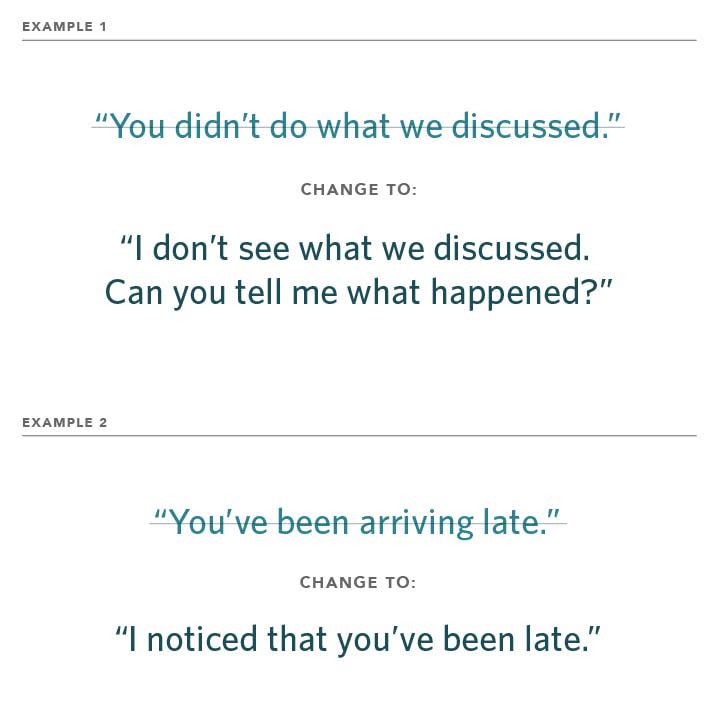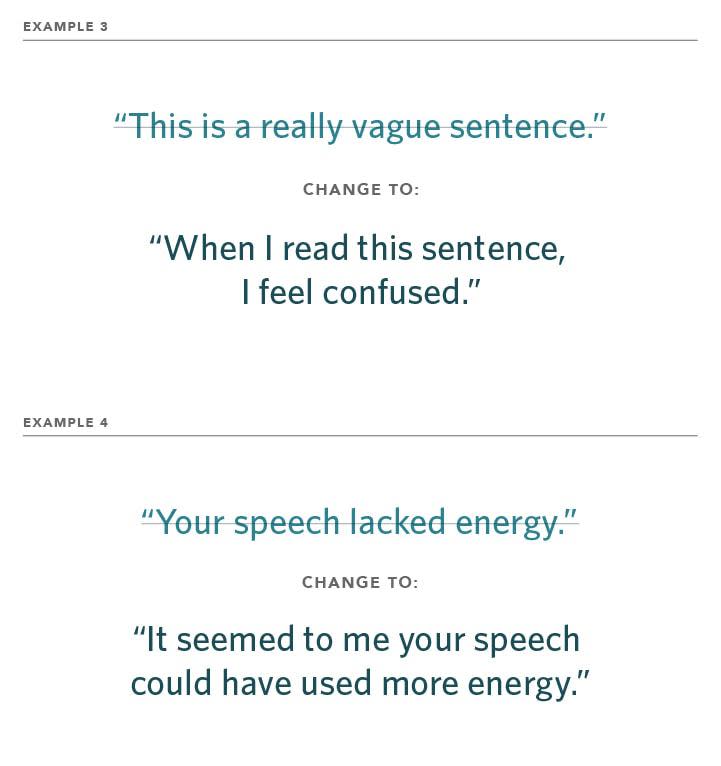Naomi shares four ways to give constructive feedback that build relationships and open discussions for better work.
“You didn’t add a shadow.”
His accusatory tone felt like a slap in the face. My professor had just cautioned us to speak gently when critiquing designs. This was anything but. The critiqued artist sat up straighter and compulsively explained how she had forgotten to add a shadow. Watching the exchange, I grimaced and dug my shoe into the carpet.
As an editor, I constantly give constructive feedback—my job is to help others sound smart. I listen to their vision and help them rudder the ship in that direction, building clear, concise sentences that share their thoughts with precision. In this line of work, I cannot afford to recklessly throw criticism that offends my coworkers and causes them to shore up their defenses. Firstly, it’s mean. Secondly, it’s not productive.
Whether you provide constructive criticism when editing, reviewing pull requests, or engaging with clients, the principles remain the same. So as a practiced non-offender, I’d like to share some advice for delivering empathetic, constructive feedback.
Deliver Truthful Encouragement to Show You’re on Their Side
People often discuss the sandwich model when talking about giving feedback. In this model, you start and end with encouragement (the bread) and sandwich critique in between (the meat). Some seem to view this with a condescending look down their nose—a “make up something nice so that you can say what you actually want to say” kind of situation. This should not be the case.
In any situation, you can find something exceptional the other person has accomplished.
Sometimes an article I’m working on is very unfocused, but the author has fantastic sentence structure. Sometimes the writing can be very hard to read, but the author has been incredibly kind and handled the process with grace. If there’s work to review, someone has put great effort into it; the work will contain something positive I can truthfully compliment.
We often feel the good parts are not as legitimate if we see a lot of bad parts. Not so—the good parts are even more important. If you remove all the bad, the good parts are a foundation to work from. So when you approach someone with feedback, come prepared with some genuine compliments and encouragement. It honestly recognizes their accomplishments and shows them that you’re on their side and rooting for them.
When editing, I always put a comment at the top of the document to send a precise message: no matter what you see in the comments below, I want you to know I’m on your side. It may actually read as “this has amazing content,” or “you have really well-structured ideas,” but it expresses my support for them and their work. Find the “top-of-document-comment” equivalent in your line of work to honestly support those around you before diving into difficult matters.
Soften Your Words
Hearing feedback is much less painful when it’s stated as an opinion. Which would you rather hear?
“You messed up [thing]” or “when I was looking at this, I felt a little confused. It seems to me that if we changed [thing], this would work a lot better.”
You can always add more force to your message later, but you certainly can’t take it away. Frame your thoughts in “I” statements instead of “you” statements. These tend to come across as expressing your feelings instead of attacking the person’s work.

Even statements directly concerning the work and not just the person can sting.

Each of these sends the same message but removes the sense that you are attacking the person or their hard work. And softer statements generally open conversation, giving you more opportunity to learn their intention. In some cases, you can work together to come up with a better solution.
Explain Why
Taking criticism is very hard when you feel the other person is just judging you based on personal preference.
Take the extra time to deeply explain what made you come to a different conclusion than the other person. Either your idea is based on a hard and fast rule, or your idea could be made even better with discussion. In the first case, they’ll learn something that will improve their future work. In the second case, you’ll both contribute to better work and feel happier and more accomplished.
I recently worked with an author who had accidentally created several misplaced modifiers in an article. This issue concealed the meaning of his sentences. I suggested some revisions and also took time to comment and explain misplaced modifiers. As it’s a pretty technical rule and difficult to understand from a comment, I stopped by to talk to him in person and explain the issue. He now avoids it in his own writing, and I see him helping other authors avoid the same pitfall. Taking a minute to explain it both gave him confidence in my edits and set a course for better work at our company.
Be Sensitive to Emotional Attachments
Cut these words, and they would bleed; they are vascular and alive.
– Ralph Waldo Emerson
A person’s work is an extension of that person: cut it, and they will certainly bleed. Your professional opinion will feel personal to them. Respect their vulnerability. Sometimes people need personal encouragement to get past a professional comment. Go the extra mile and provide this for them.
Once, a writer created an incredible blog post for me… that was too long. I worked carefully to chisel away the unnecessary pieces.
Then I came to a line she was very attached to. I carefully typed out an “I” statement, hit send, and anxiously awaited a response. My laptop dinged. She acknowledged my concern but tried to rewrite the sentence instead of deleting it. I sighed and slumped in my chair. It still needed to go, so I messaged her back and broke the bad news. We went back and forth. My laptop constantly chimed with her arguments for why it should stay. She tried everything to get me to keep it: logic, feeling, humor.
After nearly 15 minutes of good-humored argument, I sat back, exasperated. The line clearly mattered to her, and I knew she would mourn its loss. I sent her the only thing I knew would help: a recording of taps with a message: “I’ll give you a minute to listen to this and say goodbye to your line. When you’re ready, I’ll delete it from the Google doc.”
She called me laughing and said she was ready. Together, we listened to the melancholy wail of the bugle and watched the line disappear as I slowly hit delete. The writer still remembers this experience and comments that even though she had to reshape her writing, she remembers feeling like her work was in good hands with me.
Now, this is clearly not appropriate for every situation. Here, I had an opportunity to very outwardly show that I cared about her emotional attachment to her work. In other situations, it could be as simple as saying “This was a really good idea, and I’m sad to see it go too.” Or it could be showering them with positive feedback at a time your criticism might really feel like an affront to their hard work.
Take time to acknowledge that tearing apart professional work can personally hurt. Be extra sensitive and gracious. It will improve your working relationships and help others see past personal attachment to professional value.
The Great Secret
Constructive feedback is hard to deliver and harder to receive, but here is the great secret:
Have courage, and be kind.
Be brave enough to bring up issues when you see them, but be kind to the person you’re critiquing. Be on their side, choose your words carefully, explain your thoughts, and respect their emotional attachment to what they’ve created. In doing this, you’ll build relationships and help everyone create better work.




